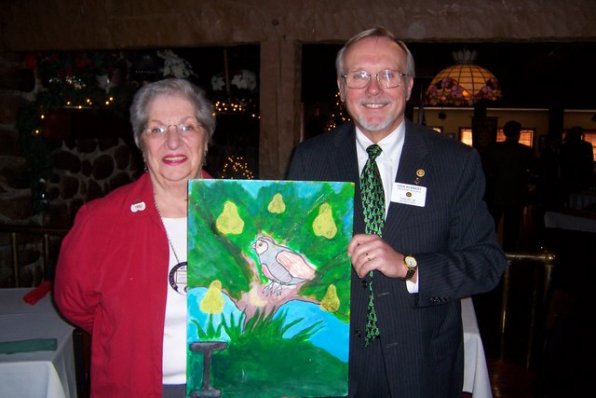“A partridge in a pear tree,” made famous in the Christmas lyric, “The Twelve Days of Christmas,” is a bird native to Europe, Asia and Africa. Here in New England, we at times call our ruffed grouse a partridge, but the two birds are not in the same avian family.
The song “The Twelve Days of Christmas” was first published in England in 1780 and it is thought that it originated in France. It has become one of our most popular and most recorded Christmas songs in America. However, across the years it has seen many different variations, some with renditions that were made comical on purpose.
Research into the history of this song will reveal that what we now sing as five golden rings might have referred to the ring-necked pheasant, making the first seven gifts all birds from “my true love.” And what we now sing as four calling birds may be a misquote of “colly birds,” since colly means black, as in blackbirds. With these corrections, and taking repetition into account, the seven different birds in the song are mentioned a total of 224 times.
Centuries ago singers were very fond of accumulation songs, with each verse built on top of the previous verses, regarding them as tests of memory and sometimes sobriety. Persons failing to repeat their portion of the song in correct sequence were required to pay a trifling forfeit.
When the members of the Rotary and Kiwanis Clubs of Concord met together for their annual holiday gathering at the Red Blazer Restaurant of Concord on Dec. 12, they all sang “The Twelve Days of Christmas.” But no one had to pay a forfeit.
There is much lore associated with “The Twelve Days of Christmas,” some saying that in its deeper meaning, it is a catechism of religious tenets. Others suggest that the weather in each of the 12 days after Christmas could represent the kind of weather to expect in the corresponding month of the coming year.
Our ruffed grouse, which we incorrectly call a partridge, is so named because of its ruffed neck plumage. In winter it has comb-like fringes on its toes that act as snowshoes for easy travel on the snow. Because of its camouflage coloration and hesitant style of walking it is almost invisible as it forges on the ground, until it explodes into flight with a startling flurry of wings.
The male ruffed grouse is noted for his habit of drumming which is caused by compressing air beneath his rapidly beating wings. This would be in competition with “the twelve drummers drumming,” but the grouse's drumming is in the spring and not during “The Twelve Days of Christmas.”






















